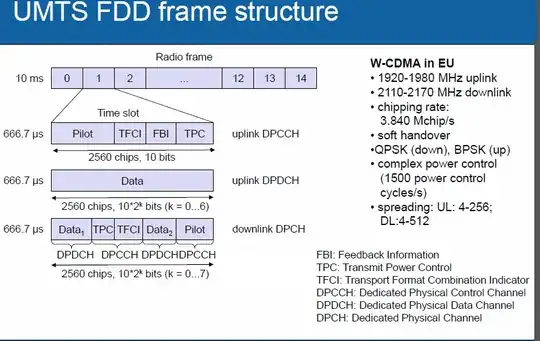Assuming:
Radio frame
- Subdivided in 15 slots
- Number of chips: 38.400
- Duration: 10 ms; each slots = 666.6 μs and has 2.560 chips
Example of channels
DPDCH (Dedicated Physical Data Channel) (UL)
- Spreading factor varies between 4 and 256
- Data rates 960, 480, 240, 120, 60, 30 and 15 kbit/s
- Spreading factor 4, 640 bits/slot, 15 slots/frame, 100 frames/s -> 960 kbit/s
- Spreading factor 256, 640 bits/slot, 15 slots/frame, 100 frames/s ->15 kbit/s
- A connection can have at most 6 DPDCH -> 5, 74 Mbit/s
Question
I don't really understand how the bitrate for DPDCH is determined like "960kbit/s" for example. Which formula is used to derive these values?
Here is a picture of the frame structure.
